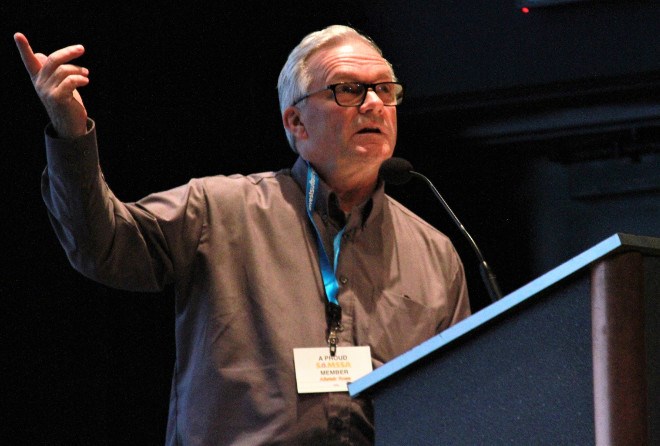Nickel is in demand right now, and that’s largely thanks to its role in the burgeoning battery-electric vehicle sector. It’s good news for producers like Vale, but as the technology advances rapidly, one question remains: how can the miner produce enough of the metal to keep up with the industry?
“Our biggest concern, actually, is where does the nickel come from, and we don't think we can build the plants fast enough, unless we find alternative, cheaper ways to actually start delivering that metal to market,” said Alistair Ross, the director of mining and milling for Vale’s North Atlantic base metals operations.
“We believe innovation is the access to that.”
Speaking to mining supply and service providers during the Dec. 10 annual meeting of the Sudbury Area Mining Service and Supply Association (SAMSSA), Ross said Vale is working to digitize every stage of ore production, from exploration through to market, and do so “at the right cost.”
Data gleaned from operations will be a key factor in achieving that, he said. Eventually, Vale believes the technology will be so advanced they’ll be able to read the metal from the drill as it’s going through the stope.
“We don't have to collect a sample, we don't have to send it to a lab; we have instantaneous measurement from the drill,” Ross predicted.
“We know the rate at which the drill's going, we know the angle at which the drill's going, we interpolate to the next holes, and we can start to understand geometry way earlier than we would understand it now."
Testing on various technologies is already underway. At Vale’s Garson Mine, north of Sudbury, staff is experimenting with an LTE communications network, which, in early December, allowed them to successfully conduct a videoconference between staff on surface and underground.
At Totten Mine, west of Sudbury, Vale is running both a teleremote drill and an autonomous scoop. Data collected by the scoop has let Vale develop a predictive model for when components, like a gearbox or a bearing, will fail.
“In the past, we’ve guessed, taking them out and they’re good, or we didn’t guess and they failed in the field,” Ross said. “The data analytics so far are predicting very close for us so we can get a full use out of the components now.”
At its Clarabelle Mill, Vale is using data to better understand error messages that pop up when a malfunction happens during the milling process, such as a stuck valve or a decrease in flow.
Ross said the company’s never analyzed what happens during multiple error states, or how recovery follows. With a new system in place, the company now prioritizes error messages, with the more significant ones getting addressed immediately. The company is already seeing results.
“What’s fascinating is that we now have seen our way to around about half a per cent increase in recovery just by responding to error states differently than before,” Ross said.
“Now, with data analytics, it’s very clear where we're going, and we’re putting new control loops in place. We will have a little bit of AI (artificial intelligence) attached and start to increase recovery, so we're very excited about this particular one.”
Vale also expects digitization to make work safer for its employees. The company knows that if it can pull people away from the face, the level of risk drops dramatically, Ross said. And so Vale is looking at ways technology – like the teleremote drill and the autonomous scoop – can improve safety.
Ross said autonomous drones are helping to conduct some of the riskiest work, like inspecting dams and pipelines. Currently, the company sends an employee out in a truck to do the inspections, but drones could alleviate that task. They’ve even sent it to inspect stopes underground.
“What's remarkable with these autonomous drones is that they see more than the human eye can see,” said Ross, noting a drone can detect a shift in the position of a pipeline as small as a millimetre in size.
“We know that risk will be managed to a much tighter level with the use of autonomous drones.”




